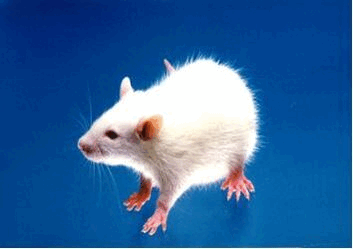VERNONIA AMYGDALINA LEAVES INCORPORATION INTO HIGH FAT DIET EXHIBITED HYPOGLYCEMIC, HEPATOPROTECTIVE, AND WEIGHT LOWERING EFFECTS IN MONOSODIUM GLUTAMATE INTOXICATED WISTAR RATS
Keywords:
Hepatotoxicity, hyperglycaemia, monosodium glutamate, Vernonia amygdalina, weight gainAbstract
Background and aims: Insulin resistance (IR) and obesity (Ob) are hallmarks of metabolic syndrome while high-fat diet (HFD) and monosodium glutamate (MSG) consumption have been implicated in both IR and Ob. In current study, hypoglycemic, hepatoprotective, and weight-reducing effects of dietary Vernonia amygdalina (VA) in MSG-intoxicated HFD fed wistar rats was investigated.
Methods: Male wistar rats (36) were randomly allocated into six groups of six rats each, each weighing between 150 and 250 grams on average. The animals were given 5%, 10% dietary incorporated VA (VAHFD), and Orlistat 10 mg/kg for 4 weeks after being treated orally with MSG 8000 mg/kg for the first 8 weeks while on HFD. Changes in the experimental animals' weight, liver histology, total protein and albumin concentrations, and fasting blood glucose concentrations were all noted, and the data was analyzed for statistical significance using appropriate techniques.
Results: Peak fasting blood glucose concentration was recorded for the MSG-only group at the end of the study period while 10% VAHFD was greater than Orlistat 10 mg/kg in reducing it. Hepatotoxicity was observed in rats fed the HFD or HFD + MSG while the 10% VAHFD was comparable to Orlistat 10 mg/kg in protecting the liver both of which were greater than the 5% VAHFD. The Orlistat group showed a peak reduction in weight gain from week 9 to the end of week 12, followed by the 5% VAHFD > 10% VAHFD.
Conclusions: Following co-intoxication with MSG + HFD, dietary VAHFD was effective in managing hyperglycemia, hepatotoxicity, and weight gain, however, there was no additive effect on toxicity from MSG + HFD co-intoxication on the various studied parameters.

Peer Review History:
Received 4 February 2024; Revised 11 March 2024; Accepted 19 April; Available online 15 May 2024
Academic Editor: Dr. A.A. Mgbahurike , University of Port Harcourt, Nigeria, amaka_mgbahurike@yahoo.com
, University of Port Harcourt, Nigeria, amaka_mgbahurike@yahoo.com
Reviewers:
 Ahmad Najib, Universitas Muslim Indonesia, Makassar, Indonesia, ahmad.najib@umi.ac.id
Ahmad Najib, Universitas Muslim Indonesia, Makassar, Indonesia, ahmad.najib@umi.ac.id
 Dr. Tamer Elhabibi, Suez Canal University, Egypt, tamer_hassan@pharm.suez.edu.eg
Dr. Tamer Elhabibi, Suez Canal University, Egypt, tamer_hassan@pharm.suez.edu.eg
Downloads

Published
How to Cite
Issue
Section

This work is licensed under a Creative Commons Attribution-NonCommercial 4.0 International License.









 .
.